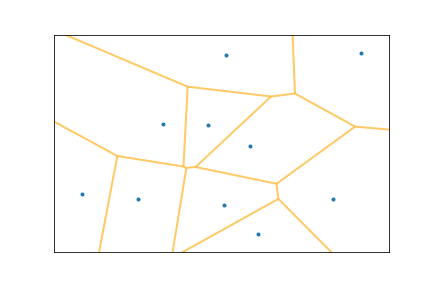Grid Node Based and Wavelet Based Parametrization (DRAFT)#
In imaging-based modeling, the trade-off between a fine parameter grid and model resolution makes the choice of model parameterization a tough task. Either initially choosing a relatively coarse parametrization and then refining it adaptively or doing it in the opposite way could be a possible parametrization strategy. One can simply uniformly refine or coarse the grid adaptively through the optimization process to find a suitable parameter grid and a suitable model resolution of the individual grid cells [Plattner et al., 2012].
In some applications where the data is distributed unevenly or has sparsity features, the ideal situation is that the grid can adaptively match the resolving power of the data in such a way that grids are more sparse in the region where data is less and grids are denser in the region where data coverage is good. In this case, uniformly refining or coarsening the grid adaptively may deteriorate the model resolution, and small-scale features in the model are generally smeared out even in the region where the data is well covered. Thus, an adaptive proper model parametrization strategy that can decide where model refinement (or coarsening) should be performed is a key element.
Grid Node Based Parametrization#
Model refinement and coarsening which can be performed with structured rectangular grids, or other parametrization schemes, such as Voronoi cells in Fig. 45 or Delaunay triangulation, and the unknown model parameters are determined at the grids center or edges is known as grid nodes based scheme. Model parameters are solved through the optimization process. To deal with uneven distributed data, grids or cells are tend to be bigger in the regions that have sparse densities of data point.

Fig. 45 Voronoi cells.#
Wavelet based Parametrization#
Different from refining or coarsening on grids themselves, wavelet analysis provided a way to decompose imaging in basis function at multiple scales, so-called multi-resolution analysis. Through the optimization process, the wavelet parameterization can be adaptively refined at multiple scales. Instead of solving the model parameters itself, here the wavelet-based methods solve for the hierarchy of wavelet coefficients of the model. The model parameters are assigned to the corresponding wavelet. Wavelet transform is typically used to promote sparsity via wavelet coefficients over all scales. If data is not covered well at a certain part of the model, only fewer wavelet coefficients are needed while if a certain part of the model has small-scale features with good data coverage, more wavelet coefficients are required to represent the model sufficiently [Fang and Zhang, 2014].
References#
- FZ14
Hongjian Fang and Haijiang Zhang. Wavelet-based double-difference seismic tomography with sparsity regularization. Geophysical Journal International, 199(2):944–955, 2014.
- PMVB12
Alain Plattner, HR Maurer, J Vorloeper, and Mark Blome. 3-d electrical resistivity tomography using adaptive wavelet parameter grids. Geophysical Journal International, 189(1):317–330, 2012.
Contributor#
Maqsood Rajput
